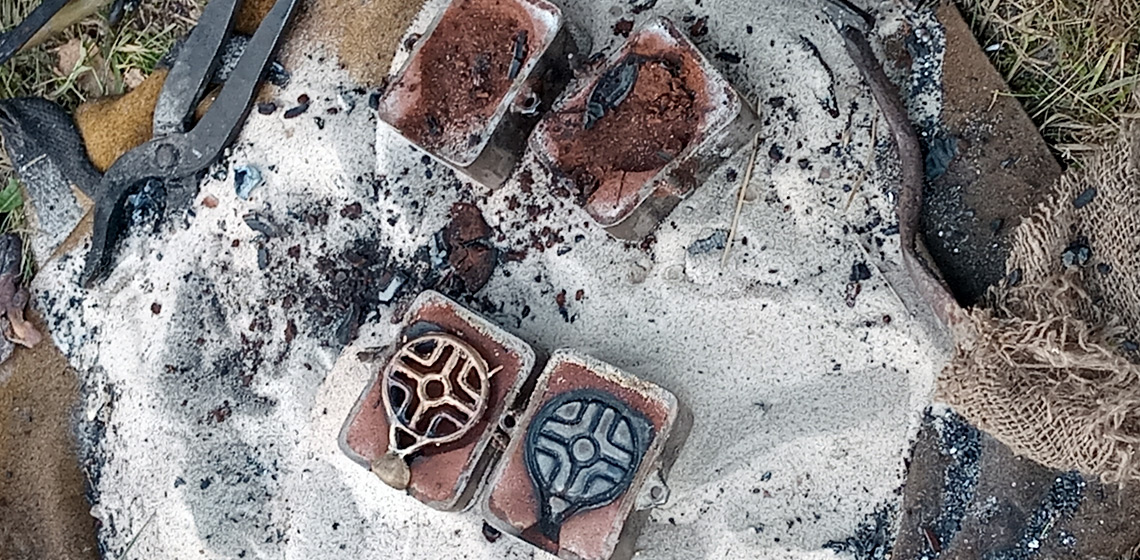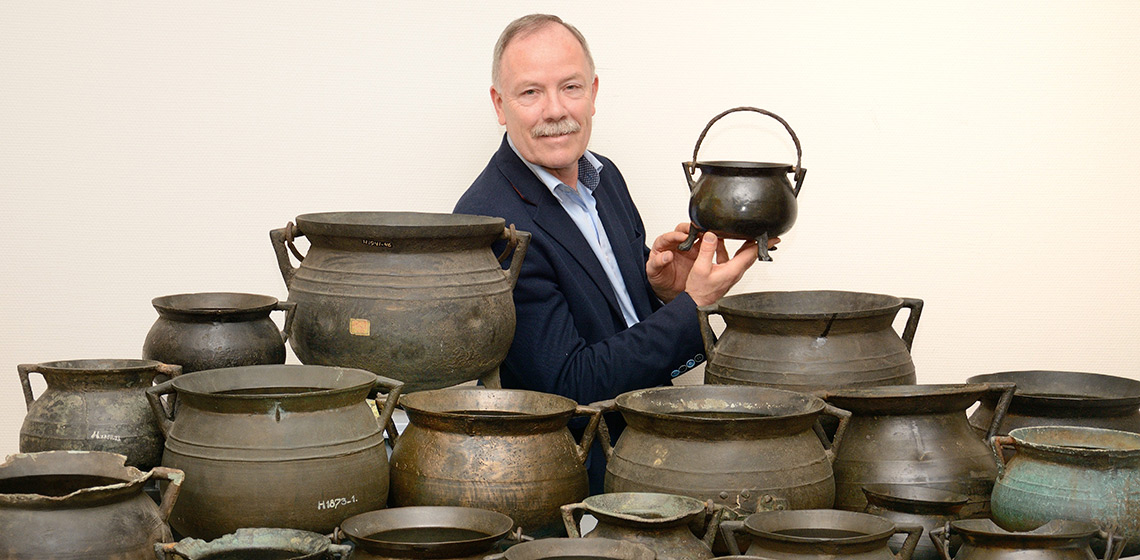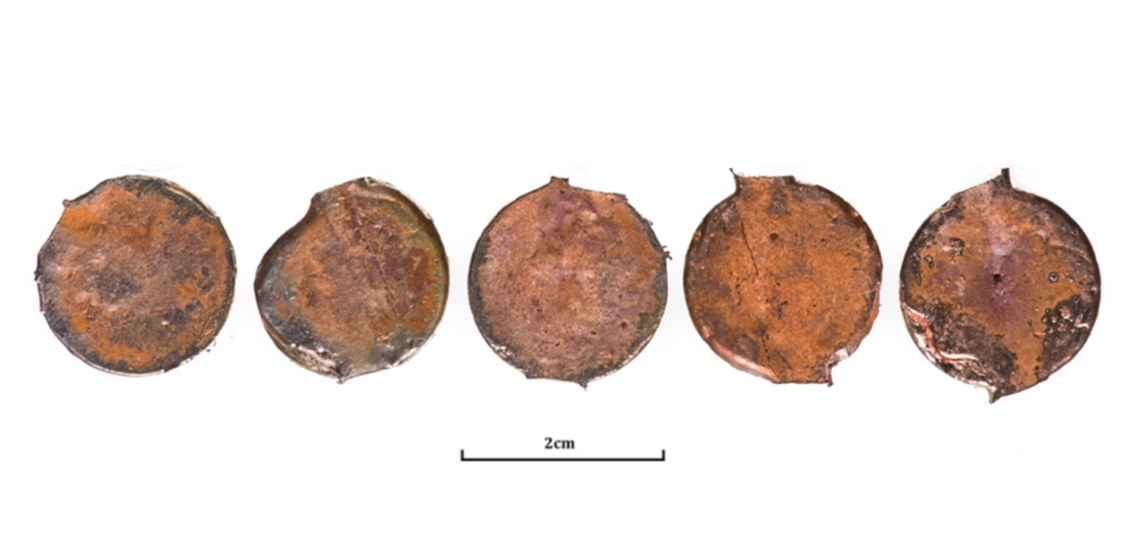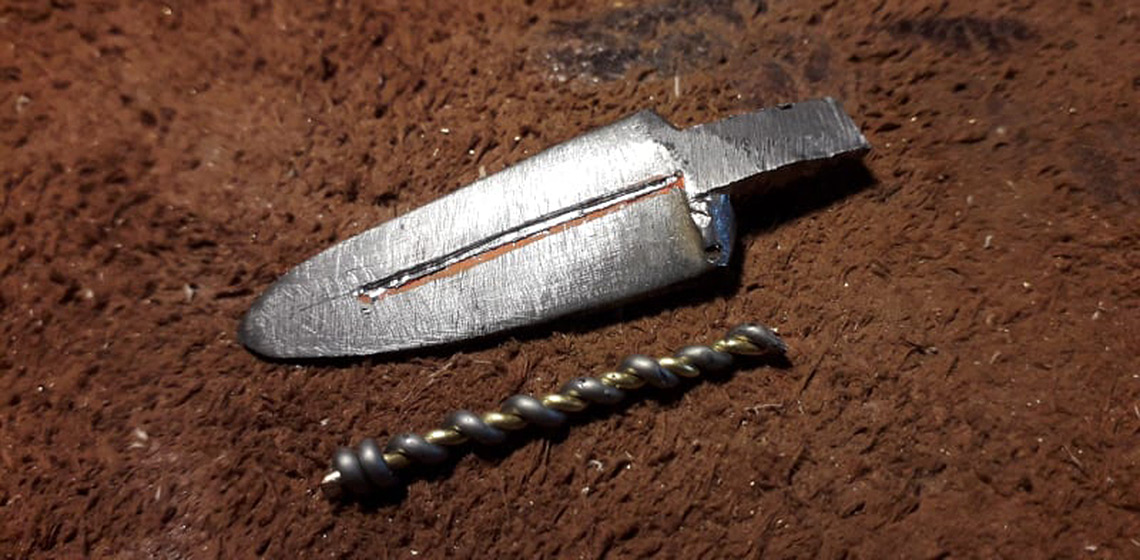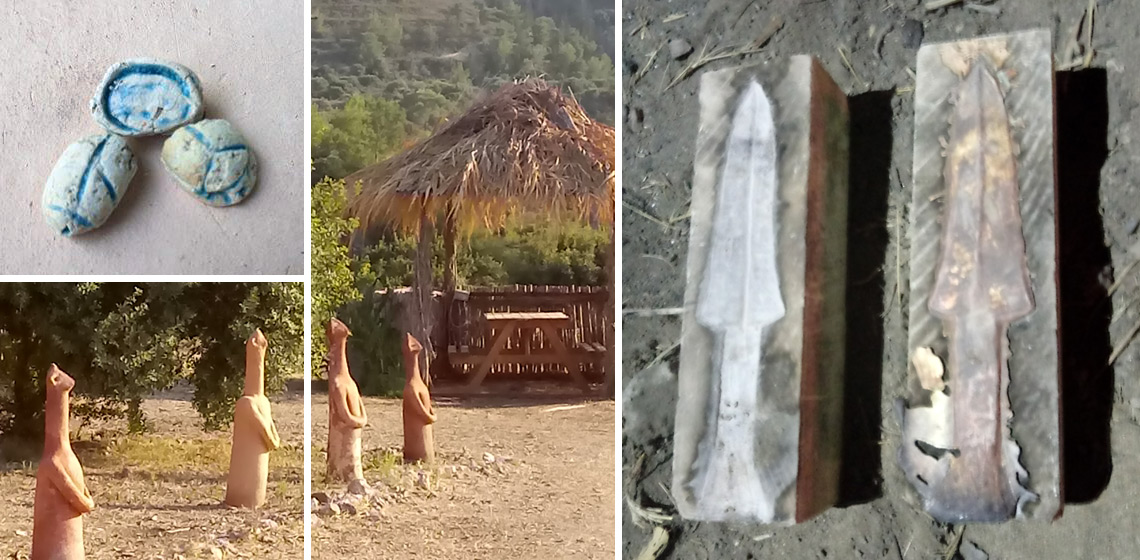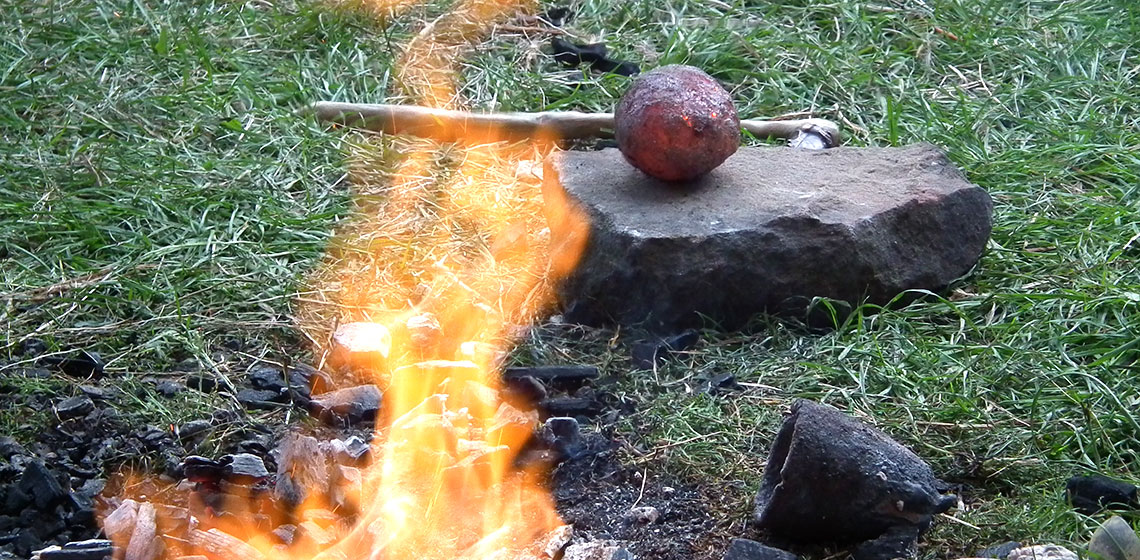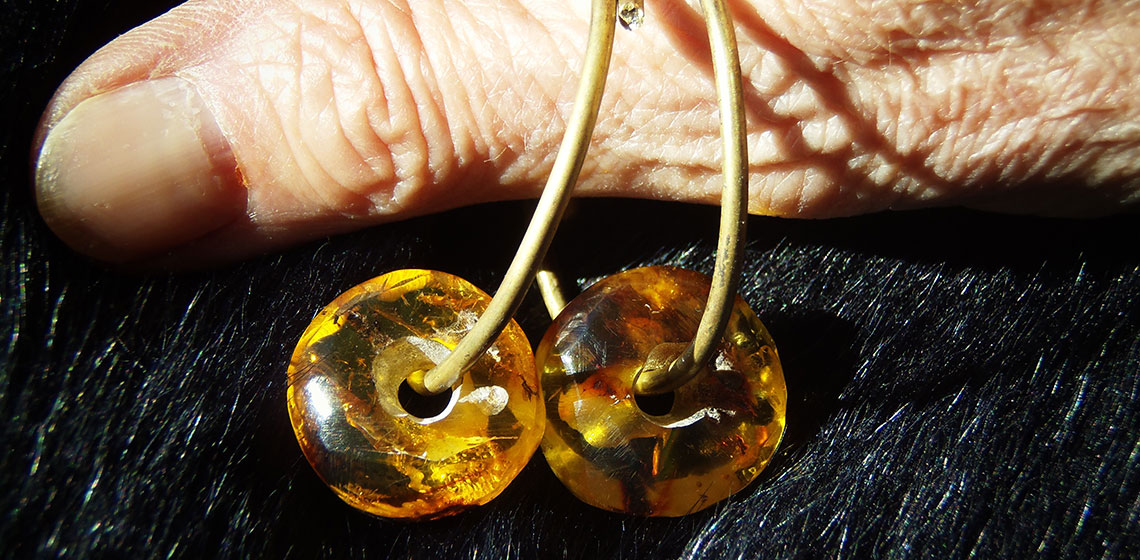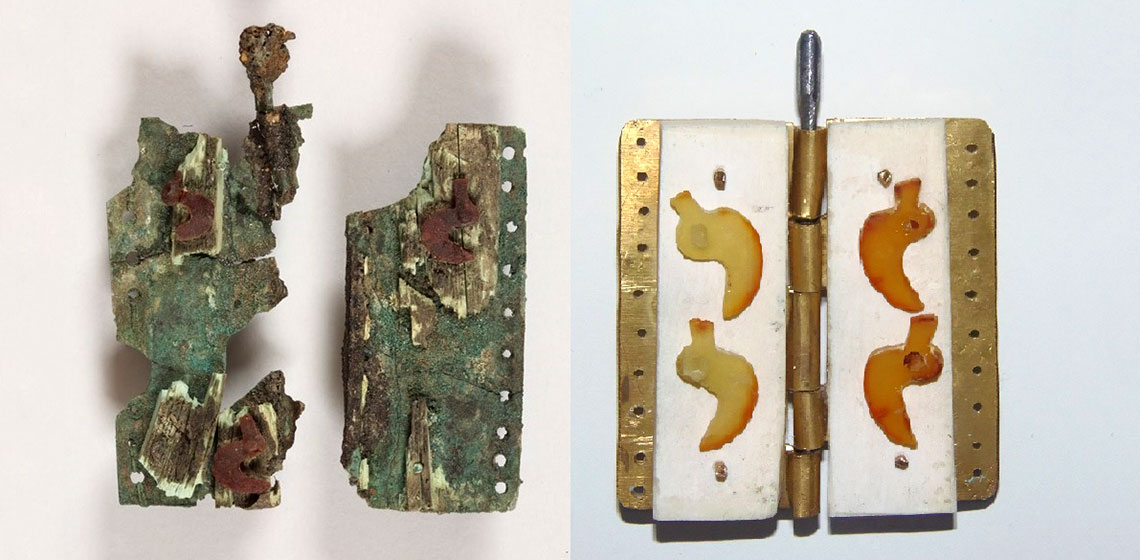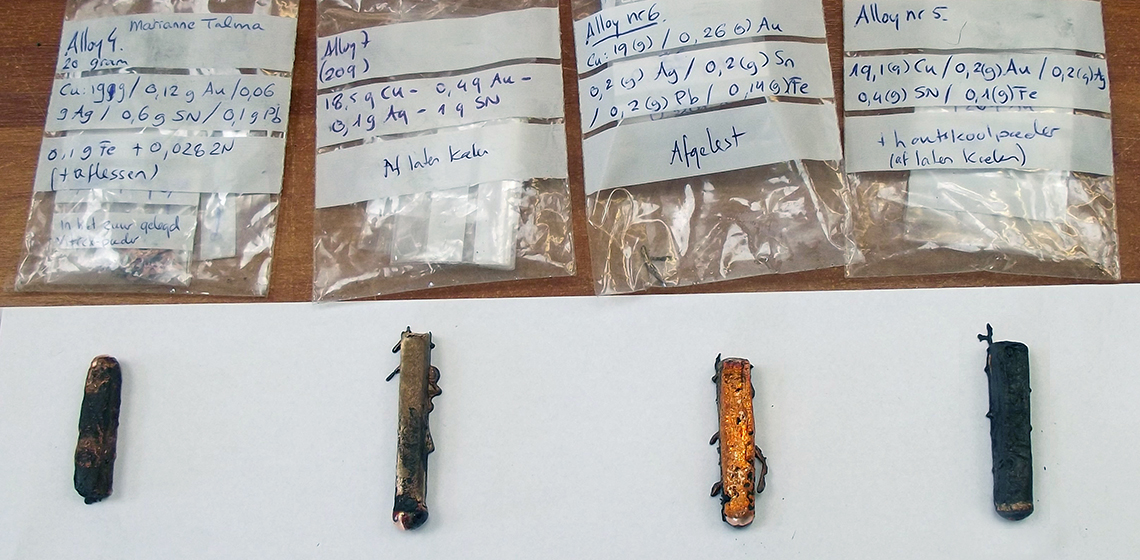bronze
Event Review: Vounous 2024
Publication Date
The annual Vounous Symposium was once again held at the site of the Bronze Age cemetery in Çatalköy, Northern Cyprus, from 1-16 September. Over 60 artists and researchers from Europe and America participated in the event, recreating Bronze Age Vounous ceramics. As in past years, artists, craftworkers, and researchers gathered from around the world to participate and experiment with...
Event Review: Bronze Casting in Daugailiai, Lithuania
Publication Date
On 13 July 2024 the village of Daugailiai celebrated the 770th year of its founding on with a festival that included demonstrations and experiments in bronze casting. Daugailiai is a village in Utena County in Northeast Lithuania. The village features a hillfort, which is dated to 1st millennium BC-beginning of 1st Millenium AD, upon which a castle was built in 1254 and...
Killing the Cauldron: Experimental Research on Dented Bronze Cauldrons from the (post)Medieval Period
Publication Date
Bronze cauldrons from the late Middle Ages, and the 16th and 17th century are hardly ever discovered during archaeological excavations but are usually unearthed by detectorists having discovered the find of their life. Many of these vessels happen to be damaged. Sometimes one or two legs are lost, or a piece of the rim is missing, more often they exhibit one or more dents. We know that in prehistory the ritual...
Experimental Roman Minting: Casting Silver-Copper Alloys into a Bronze Mould
Publication Date
#EAC12 World Tour 2021
***This paper provides the details of a Roman minting experiment, which used a bronze mould to cast debased silver blanks typical of the third century A.D. The investigation follows the paper ''Experiments reproducing Roman debased alloys" (George, 2020) which studied the manufacturing methods used...
***This paper provides the details of a Roman minting experiment, which used a bronze mould to cast debased silver blanks typical of the third century A.D. The investigation follows the paper ''Experiments reproducing Roman debased alloys" (George, 2020) which studied the manufacturing methods used...
Replica of the Knife 2165 found in Flixborough a Late Anglo-Saxon Period Knife with an Inlay of Twisted Bronze and Silver Wires
Publication Date
This work aims to show the reconstruction of a medieval era knife that was found in Flixborough, Lincolnshire (UK). Flixborough’s Anglo-Saxon cemetery has returned a total of 11 knives that can be dated between the 8th and the 10th century AD. The specimen discussed here is known as Knife 2165 and was found in context 3417 of the site. This knife is the smallest of the inlaid knives found in Flixborough...
Conference Review: The Third Annual Vounous Symposium
Publication Date
The Third Annual Vounous Symposium was held 1-16 September 2019 and located near Çatalköy in Northern Cyprus. In addition to ceramics and bronze casting, experiments were also conducted on smelting local copper ore, carving moulds from local limestone, and making faience.
Event Review: Third Annual Bronze Casting Festival, Uelsen (DE)
Publication Date
The third annual Bronze Casting Festival at the Bronzezeithof in Uelsen continued its theme of metalworking and experimental archaeology in a Bronze Age setting. The event drew participants from around Europe and the US to combine their knowledge and share experiences...
Wives, Queens, Goddesses: Reconstructing the Outfit of a 8th-7th Century BC Picenian Woman
Publication Date
The present work is a reconstruction which was made with two objectives in mind. Thee first was to experiment with heat-treating of amber, a technique already hypothesised by Von Eles (1995), in order to verify possible resin alteration due to heating. Although already tried in the past (Fiorentini, 2018b) after having conducted some cold-working experiments (Fiorentini, 2018a)...
A Seventh Century BC Picenian Cloack Clasp Made of Iron, Bone, Bronze and Amber: Reconstruction of a Masterpiece
Publication Date
This article is dedicated to the reconstruction I’ve done in 2017 of a Picenian cloack clasp which is a pretty unique find. It has been found in a prince’s grave dating back to the early 7th Century b.C. and is considered a rare find because only a few similar items have been found in Central Italy, and because of the rare use of amber decorations and bronze plates, that makes this find a true masterpiece...
An Experimental Diachronic Exploration of Patination Methodology of Dark Patinated (Arsenical) Copper Alloys on Case Studies from the Eastern Mediterranean Bronze Age and Early Iron Age
Publication Date
10th EAC Leiden 2017
***Artificially patinated copper alloys are found archaeologically in polychrome artefacts from the 19th century BC Egypt to historical and contemporary Japan. The unusual colour variations observed in these patinas, ranging from black to blue to purple, is due to a minor amount of gold (Au) and silver (Ag) in their copper matrix, whereas accompanying elements such as tin (Sn), iron (Fe), and arsenic (As) might influence workability, hue or shine.
***Artificially patinated copper alloys are found archaeologically in polychrome artefacts from the 19th century BC Egypt to historical and contemporary Japan. The unusual colour variations observed in these patinas, ranging from black to blue to purple, is due to a minor amount of gold (Au) and silver (Ag) in their copper matrix, whereas accompanying elements such as tin (Sn), iron (Fe), and arsenic (As) might influence workability, hue or shine.


